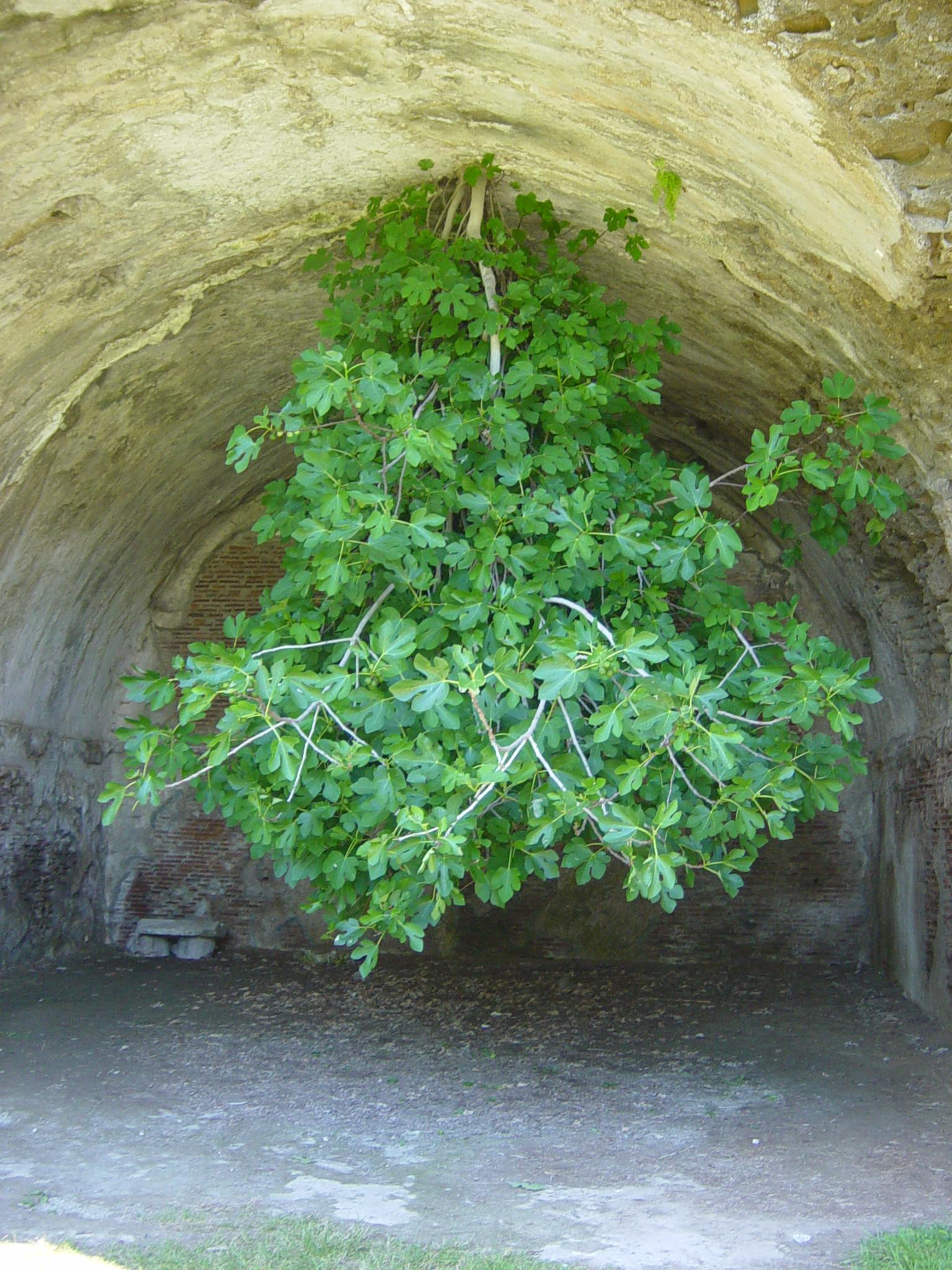This fig tree has been growing in an unusual way. Image credit: Crescendo104 & Gianfranco Vitolo

Baiae was an ancient luxury resort in Rome, notorious for its villas and wealthy guests. Image credit: Gianfranco Vitolo
Most of the villas were built in a very bold fashion, from 100 BC to AD 500, with much of the town becoming imperial property under the rule of Augustus. Most villas were located on terraces along the coastline, and some of them even had private fisheries, so they could provide themselves with fresh fish every day. An elegy by Sextus Propertius, written in the Augustan Age describes Baiae as a “den of licentiousness and vice”, where the hedonistic residents and guests indulged in beach parties and long drinking sessions.

Some of the villas even had private baths. Image credit: Gianfranco Vitolo
Among the ruins of Baiae, keen-eyed observers can see something else of interest apart from the ancient Roman town: a large fig tree growing downwards from the ceiling of an archway. While these aggressive trees can often be seen growing out of bricks and buildings, a fully inverted one is quite rare.

The common fig tree, Ficus carica, is native to the Mediterranean and western Asia, but now it can be found in every corner of the world. The edible fig was one of the first plants ever that humans cultivated. Ancient fig fossils have been found in the Jordan Valley, north of Jericho, and they date back to 9400-9200 BC. Edible fig was very widespread in ancient Greece, and it was also a popular food source for the Romans as well. So, it’s quite likely that the wealthy guests of Baiae were feasting on figs too.

Fig trees are very sturdy; they can live in the most inhospitable environments. Image credit: Crescendo104
It’s very likely that this particular fig tree growing out of the ruins of Baiae gets its source of water from the rain that sips through the rocks. However, it’s impossible to know what made the tree want to grow this way, and what made it possible in the first place. Nevertheless, it is a prime example of life always finding a way.